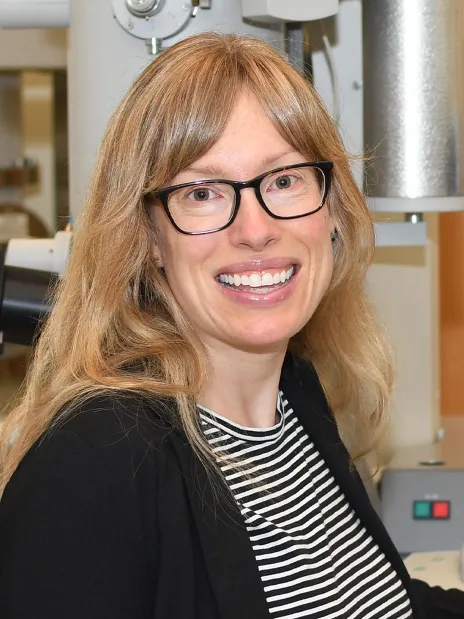EES Catalysis
Exceptional research on energy and environmental catalysis.
Editor-in-Chief: Shizhang Qiao
Open Access: Gold

Research into catalysis could hold the answer to discovering new energy solutions. The purpose of EES Catalysis is to capture and gather pivotal research in this subject area and inspire change around the world. At its core, EES Catalysis aligns with the UN’s Sustainable Development Goal 7 – to ensure access to affordable, reliable and modern energy for all.
ISSN: 2753-801X
Indexed in: Directory of Open Access Journals (DOAJ), Scopus, Web of Science
Journal Impact factor
8.1 (2024)
First decision time (all)
6 days
First decision time (peer reviewed)
27 days
Scope
EES Catalysis is a premier journal, publishing high-quality experimental and theoretical catalysis research for energy and environmental applications. Delivering the same impact and influence which researchers associate with the Energy & Environmental Science brand, EES Catalysis is transdisciplinary, publishing globally impactful energy and environmental catalysis across all scientific disciplines including chemistry, materials science and engineering.
Exceptional research using any type of catalysis is welcome. This includes heterogeneous, homogeneous, molecular and biocatalysis phase-based investigations, and encompasses the fields of thermo-, electro-, and photocatalysis for the production of clean energy, fuels and chemicals, modification/repairing of environment, and improved planetary health.
Both fundamental and applied catalysis research, as well as reports, focused on new reactions, new methodologies, new approaches, and new mechanisms that are of significant general interest to the community, are all welcome.
As a gold open access journal, EES Catalysis aims to publish high quality, transformative and interdisciplinary research on energy and environmental catalysis. I am excited to be Editor-in-Chief of this journal, and I’m keen to help create real-world innovation in the catalysis field.
Shizhang Qiao, Editor-in-Chief, EES Catalysis
Information for authors
Want to publish in this journal? Our author guidelines explain how to prepare and submit your article and provide useful information on the review and publication process including transfers, revisions and any article processing charges (APCs) that may apply.
You can read our payments and funding information for further details about APCs, which may apply for publishing open access in this journal, as well available discounts and waivers.
You may be able to publish open access in this journal, with no APC to pay, if your institution has an open access agreement with us. You can use our journal finder tool to check for agreements between us and your institution.
Meet the team





Anastassia Alexandrova
University of California Los Angeles
Joel W. Ager III
Lawrence Berkeley National Laboratory
Jong-Beom Baek
Ulsan National Institute of Science & Technology (UNIST)
Alexis Bell
University of California
Annemie Bogaerts
University of Antwerp
Charles T. Campbell
University of Washington
Sir Richard Catlow
University College London
Jingguang Chen
Columbia University
Zhongwei Chen
University of Waterloo
Ib Chorkendorff
Technical University of Denmark
Charles Dismukes
Rutgers University
Qian He
National University of Singapore
Yu Huang
University of California Los Angeles
Adam Lee
Griffith University
Douglas Macfarlane
Monash University
Ki Tae Nam
Seoul National University
Ungyu Paik
Hanyang University
Regina Palkovits
RWTH Aachen
Menny Shalom
Ben-Gurion University of the Negev
Licheng Sun
KTH Royal Institute of Technology
Zhiyong Tang
National Center for Nanoscience and Nanotechnology
David Tilley
University of Zurich
Xin Wang
City University of Hong Kong
Ye Wang
Xiamen University
Emma Eley
Executive Editor
Edward Gardner
Deputy Editor
Sarah Holmes
Deputy Editor
Nour Tanbouza
Development Editor
Claire Darby
Editorial Manager
Katie Fernandez
Associate Editorial Manager
Neil Hammond
Publisher
Robin Brabham
Publishing Editor
Emma Carlisle
Publishing Editor
Hannah Hamilton
Publishing Editor
Rebecca Milne
Publishing Editor
Ephraim Otumudia
Publishing Editor
Irene Sanchez Molina Santos
Publishing Editor
Michael Spencelayh
Publishing Editor
Callum Woof
Publishing Editor
Linda Warncke
Publishing Assistant
Kate Bandoo
Editorial Assistant
Read this journal
Paper
Local hydrophobicity allows high-performance electrochemical carbon monoxide reduction to C2+ products
Paper
Zr-doped BaTaO2N photocatalyst modified with Na–Pt cocatalyst for efficient hydrogen evolution and Z-scheme water splitting
Paper
A perspective of COx conversion to aromatics at ultra-low potential
Review article
Catalytic hydrogen storage in liquid hydrogen carriers
More from this journal
Contact the journal team
We're here to help. Contact the journal team if you have any questions about publishing your paper with us.
Sign up for journal email alerts
Get table of contents alerts and notifications about calls for papers, themed issues and more.
